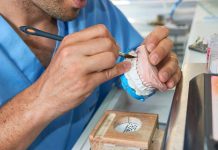In today’s world of DSO practices, as these rely mostly on HMO PPO insurance, growing profits is constantly challenging. Today’s trend leans towards practices which offer multi-specialty services that allow increases in practice gross revenue without referral outside the practice for those needed services.
Elective services, such as cosmetic procedures are not covered under most insurance plans. So, adding elective cases in your DSO practice not only can increase gross revenue. But, when the right elective dentistry products are offered with techniques learned incorporating advanced dental education available, a DSO practice could benefit from net and not just the gross revenue increases which are truly increased profits. DSO’s having numerous branded locations across the US, systems to benefit from these added services are in demand by the consumer (patient) and are needed.
Direct Composite Veneers
Offering ceramic (porcelain or lithium
Offering direct composite veneers which can be half the cost or less than ceramic based restorations and could indeed show higher patient acceptance related to a balance between esthetic improvement and out of pocket cost. But as we all know, how do you get the best results, without losing profits on the procedure, especially when creating the restorations freehand style intraorally.
Learning procedures from leading advanced dental educators, such as “The Nash Institute” Continuum Program, would provide the skills and know how to offer predictable results and increased elective dentistry with higher patient acceptance and a great way to increase profits.
Direct Composite Veneer Case

Figure 1: Patient presented with dissatisfaction with her smile expressing that she felt it was worn looking and gummy in appearance. Examination notes incisal wear on the central incisors with the lateral incisors, incisal edge more coronal then the adjacent central incisors.

Figure 2: Healthy gingiva was noted and the incisal wear on the central incisors presented a worn smile with the incisal edges of the laterals positioned more coronal then the central incisors. The central incisors due to the wear have lost length coronally, resulting in the width and length being equal resulting in a square looking tooth.

Figure 3: When we look at central incisors, based on “golden proportions” the width of the tooth should be 80% of the length of the coronal of the central incisor to give an acceptable esthetic appearance. When the length equals the width, as in our clinical example, the

Figure 4: Width relationship between the anterior maxillary teeth also factors into the esthetic overall appearance. The width of the lateral incisor combined with the width of the canine from the mesial contact to mid canine (vertical line

Figure 5: As can be observed in the patient, the width of the

Figure 6: Direct composite has been added to the right central incisor to achieve a length to width ratio following golden proportions restoring the tooth’s length to where the incisal edge was prior to the wear. As we can observe, the right centrals incisal edge in relation to the lateral incisor is 1-1.5mm longer providing a more youthful appearance. We can also see how much wear had occurred to the central incisors when we compare the corrected right central to the untreated left central incisor.

Figure 7: Both central incisors have received direct composite veneers restoring them to

Figure 8: The direct composite veneers is carried over onto the lingual surface blending with the remaining tooth structure. Treatment of the two

Figure 9: Direct composite veneers to treat the worn central incisors restored golden proportions to the maxillary anterior without the need for tooth preparation.











